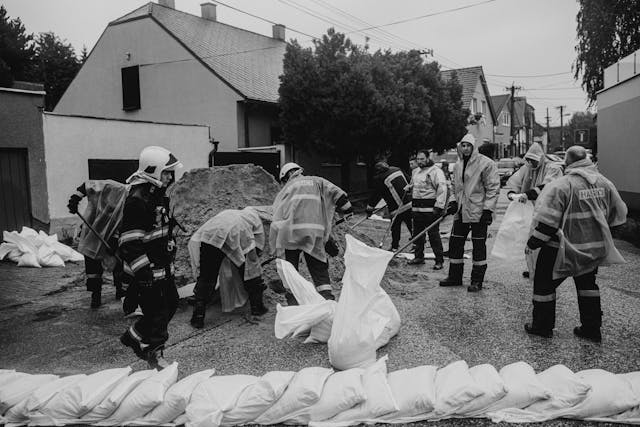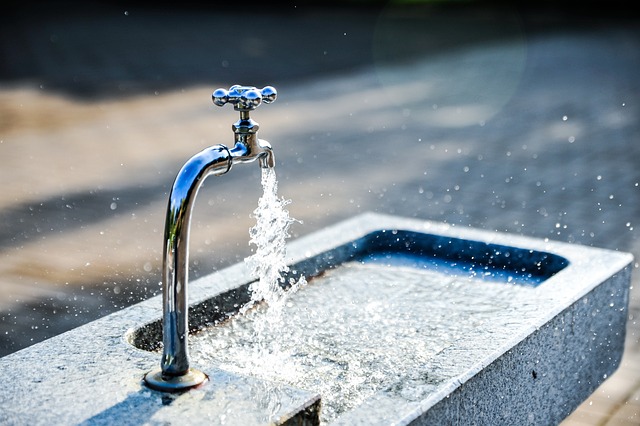Disasters have always been a part of human history. As our world becomes more interconnected and densely populated, however, the challenges of deploying the appropriate relief have grown exponentially. From hurricanes and wildfires to pandemics and humanitarian crises, each event reveals new challenges in how we prepare for and respond to such emergencies.
As such, effective planning for disaster relief programmes is more crucial than ever to mitigating the impacts of these crises. Below, we’ll explore key considerations that can enhance the effectiveness of relief efforts, ensuring that aid is both timely and responsive to the unique needs of affected communities.
Effective Collaboration, Coordination, and Communication with Everyone Involved
In the aftermath of a disaster, multiple actors become involved in delivering aid. Local governments, non-governmental organisations (NGOs), international bodies, and local communities all play a vital role in providing relief for those affected. With this many stakeholders taking part in the operations, collaboration is crucial. Being able to work together, coordinate efforts, and communicate effectively helps avoid duplication of labour while ensuring that gaps in service delivery are addressed.
To facilitate this, collaborators must create a coordination framework that clearly defines the roles and responsibilities of each contributor. This way, each group knows what is expected of them and can focus on their respective areas of expertise—ultimately resulting in a smoother process. It’s also wise to implement communication tools—such as mobile apps, two-way radios, satellite phones, and even social media—to facilitate real-time updates and information sharing among all parties involved.
Hassle-Free Access and Safety of Evacuation and Distribution Centres
Access to evacuation and distribution centres is a fundamental consideration when planning disaster relief operations. In many cases, the physical infrastructure in affected areas—such as roads, bridges, and airports—may be damaged, making it difficult to deliver essential goods and services. Ensuring hassle-free access to these critical locations is vital for the smooth delivery of aid, from food and water to medical supplies and shelter. This makes regular repair and enhancement of transportation infrastructure essential for reducing the amount of time people are left without the help they need.
The safety of these centres is equally important. Evacuation and distribution hubs must be located in areas that are secure and free from ongoing threats, whether natural or man-made. Establishing these centres in vulnerable zones could expose already affected populations to further harm. For example, setting up a distribution centre in an area prone to aftershocks following an earthquake could result in additional injuries or fatalities. To prevent this type of issue, conduct thorough risk assessments before establishing evacuation and distribution centres. This approach enables organisations to identify safe locations that are less likely to be affected by secondary disasters.
Furthermore, safety protocols should be put in place to ensure that those seeking assistance are protected, while also safeguarding the personnel delivering aid. These might include deploying specially trained personnel, establishing controlled access points, and implementing surveillance systems.
Timely Deployment of Water Hydration and Handwashing Stations
After a disaster, there is a significant risk of diseases spreading through contaminated water, unsanitary conditions, and overcrowded shelters. Conditions like cholera, dysentery, and other waterborne illnesses are highly contagious, particularly in environments where people are displaced and lack access to clean water. Thus, the timely deployment of hydration and handwashing stations as early as possible helps mitigate these risks.
These installations provide access to clean water for drinking and maintaining good hygiene, which is essential to protecting public health. A mobile water hydration station is especially crucial in areas where the affected residents include young children and mothers who are bottle-feeding their babies. A handwashing station, on the other hand, can encourage proper hygiene practices, which sometimes take the backseat when aid is focussed on food and shelter. Together, water hydration and handwashing stations help create a healthier environment for those displaced and facilitate a smoother transition back to normalcy.
Adequate Funding from Governments, Donors, and Organisations
Money from governments, donors, and organisations is vital for the success of any disaster relief operation. Indeed, financial resources underpin every aspect of disaster relief, from procuring food, water, and medical supplies to deploying emergency teams and setting up temporary shelters. Without sufficient funding, even the best-laid plans for relief and recovery can fall short. Therefore, a robust fundraising strategy is crucial for creating a stable financial base for disaster relief. With sufficient financial resources from the government, international aid, and donations from private citizens, organisations will be more capable to adapt their response—whether by scaling up operations, shifting focus to emerging needs, or addressing long-term recovery efforts.
Sustainability and Long-Term Recovery
While immediate relief is essential for survival, true recovery requires sustained efforts that go beyond providing food, water, and shelter. Thus, long-term plans must focus on rebuilding communities, restoring livelihoods, and enhancing disaster resilience. This involves rebuilding infrastructure with disaster-resilient designs, re-establishing local economies, and providing psychological support for affected populations. When programmes prioritise sustainability, aid workers can ensure that affected areas do not merely return to their pre-disaster state but rather emerge stronger and better-prepared to handle future challenges.
Integrating sustainability into recovery efforts also means considering environmental factors. In many cases, disasters are exacerbated by environmental degradation, such as deforestation, poor land management, or climate change. By incorporating sustainable practices into rebuilding efforts, such as eco-friendly construction methods, renewable energy sources, and sustainable agriculture, relief programmes can help reduce the likelihood of future disasters and their impact.
In the face of disaster, effective relief programmes are essential for safeguarding the health, dignity, and well-being of affected populations. With these considerations, organisations won’t only address the immediate needs of affected communities, but also ensure that they are able to respond well to future challenges.






